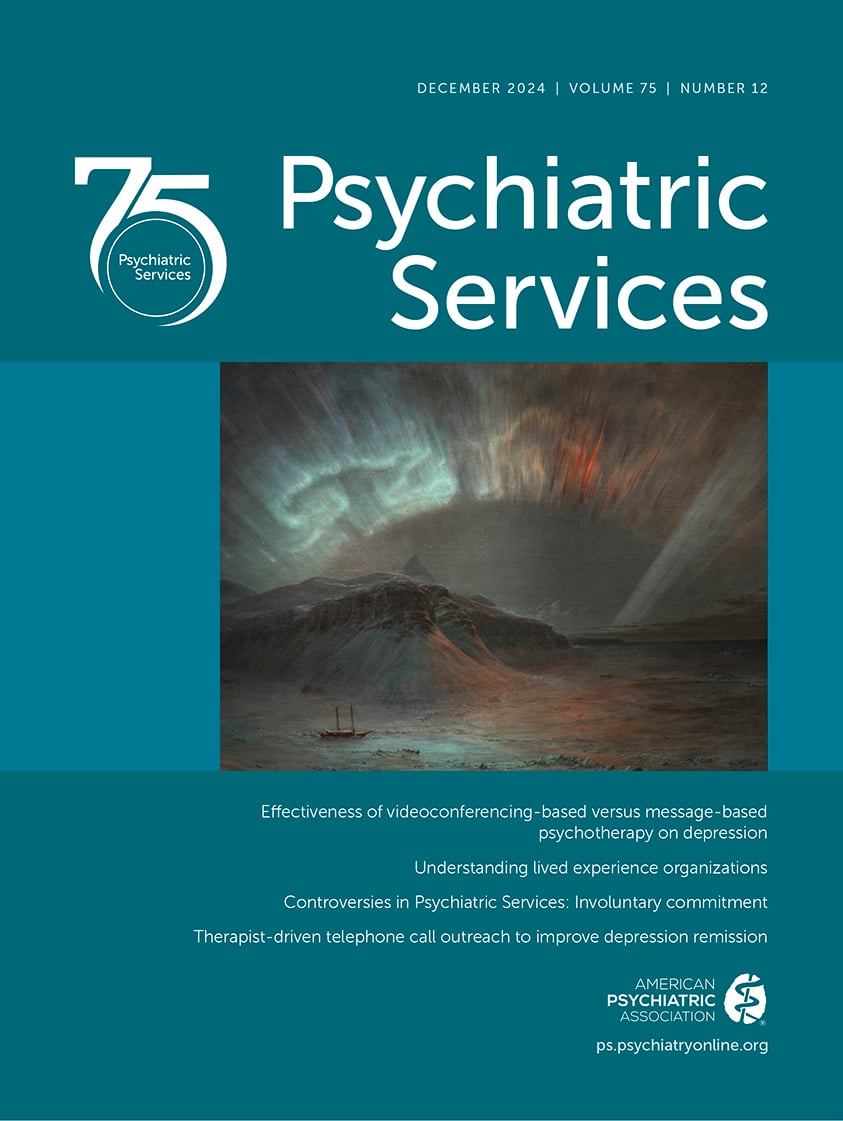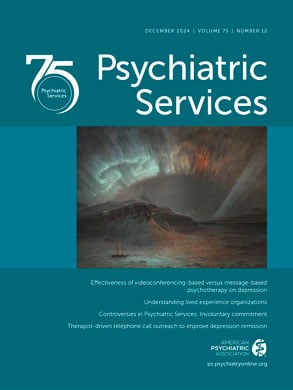Given the ethical imperative of psychiatric services to frame research in terms of diversity (
1), researchers develop or adapt intervention programs to meet the health needs of service recipients and their communities. Community here is defined as groups of individuals from diverse racial-ethnic, cultural, and demographic backgrounds to whom the principles of diversity, equity, inclusion, and accessibility (DEIA) apply. Program developers who address health equity adapt existing evidence-based programs for specific racial-ethnic groups; in this Open Forum, I use the example of adapting shared decision making (SDM) for Korean American women with major depression to illustrate points made throughout this essay. The task of adapting programs to specific communities is even more enriched when, for example, program developers further adapt SDM for Korean Americans with major depression who are women. The combined focus on Korean Americans and women classically reflects intersectionality in which the interaction of different DEIA conditions (such as race-ethnicity and gender identity) is qualitatively different from the sum of the experiences of each. Although intersectionality is a significant driver for furthering health equity and psychiatric services, it offers challenges when the number of DEIA groups in the intersection increases; not just Korean American females with depression, but, for example, lesbian Korean Americans. Among other things, such diverse intersectionality challenges feasibility and generalizability of program development and evaluation.
To illustrate these challenges, we may consider the evidence-based practice of SDM (
2)—in its standard version developed for Western European Americans, a provider and a person challenged by depression discuss the presentations of the disorder as well as the gamut of treatment options. Then, on the basis of the person’s statements of current life goals, the service recipient and care provider review options and share decisions leading to an action plan. SDM rests on self-determination; people ultimately decide for themselves how they want to act on their mental health challenges (
3). SDM as outlined here would likely differ for people from Korea with major depression, who might want to include family members in decision making. In family-centered decision making (FCDM) (
4), people from collectivist cultures, such as those in much of East Asia, might expect family members to be involved in important life decisions. Confucian thought is among the major cultural influences on this group, promoting values of harmony, unity, and hierarchy centered on the family for decision making about health (
5).
In adapting programs for DEIA, developers integrate standardized program adjustment frameworks with community-based participatory research and development (CBPRD). The developers of CBPRD added
development to the well-formulated approach of community-based participatory research (CBPR) to stress creating a services program as a key product. Ask, Describe, Assess, Plan, and Talk (ADAPT) is one such framework used by program developers for DEIA adjustments (
6). The four-step ADAPT framework begins by obtaining detailed information on the indexed intervention—SDM in this case—including past evaluations of the intervention, leading to a map representing current contexts in which this specific intervention applies. This map is then contrasted with the cultural context of interest; for example, a Western European American view of SDM may expand to collective (i.e., family) perspectives for Korean Americans. This expansion prompts the CBPRD team to develop and then test program adaptations. This iterative process yields a manualized variant of the program specifically tailored to the service recipient group.
In CBPRD, program developers and evaluators fully partner with people with lived experience from the focal DEIA community throughout the ADAPT process (
7). The CBPRD team’s work is grounded in qualitative research and includes focus groups of people having the lived experience of the targeted community about aspects of the program that is to be adapted. In CBPRD, Korean Americans with lived experience of depression join the program developer and evaluator to fully engage in all discussions about adaptation of SDM to their backgrounds and needs, followed by research to evaluate the feasibility, acceptability, and impact of this SDM adaptation. The value of CBPRD in program development is especially notable going into and coming out of the program development. When going into the development, Korean Americans with depression already have lived experience whose depth and breadth greatly inform hypotheses, adaptations, and evaluation. When coming out of the development, Korean Americans with lived experience are most likely to scale up and sustain the new program. They are motivated to work in their community and to get health care providers to adopt the new program. The value of this approach is not just in the product. The process itself can be equally important, because it empowers communities that often feel excluded and alienated from these kinds of processes to participate in health care development.
Research studies show that DEIA-adapted interventions have increased effectiveness because of their specificity for targeted populations, with effect sizes indicating up to fourfold increases in the benefits of these adaptations, compared with the standard approach for the general population (
8). Hence, we would expect that cultural adaptation of SDM for Korean Americans with depression would be more effective than the standard version because it incorporates values that are meaningful to this group, including harmony and unity. A recently developed adaptation of SDM for Korean American service recipients actively considers family in decisions and care, specifically which family members (e.g., parents, spouses, or adult children) might be included in interventions and what the nature of the final decision making will be (
9).
However, effectiveness due to the specificity of an intervention has an inverse relationship with the generalizability of the intervention. Adapting an intervention from the whole population (e.g., SDM for Americans of European descent) to a specific community or population is likely to exclude many of those in the whole population from using the new intervention. Scalability is a public health value that drives service development; that is, research and development strategies seek to promote evidence-based practices to care for broader populations (
10). Given the tension between intersectionality, specificity, and scalability, how do CBPRD teams decide whether program development for a specific intersection is feasible and beneficial? There is value in promoting the science related to culturally meaningful program development to generate evidence-based practices. Obtaining resources for this effort is driven by statements of public health significance, which partly represents priorities in terms of the overall population (
11). Statements of public health significance, and of scalability, are often framed by prevalence assessed through population analyses and epidemiology, a proxy of what sometimes is called “the size of the problem.”
CBPRD priorities tend to be nation centric; hence, a DEIA population based on Western European American CBPRD would limit the group to those residing in the United States. As a further example, according to the 2022 U.S. American Community Survey (
12), 1.5 million people in the United States identify as Korean American, corresponding to 0.45% of the U.S. population. Given that the prevalence rate of major depression in the United States is 8.3% and assuming that this rate does not vary by race-ethnicity (
13), about 124,583 individuals would meet the criteria for the intersection of Korean American and major depression. About 56% of Korean Americans in the United States are women, so the three-way intersection would result in 69,766 individuals who are female and Korean American and who have major depression. Would CBPRD teams and resource providers for DEIA research view 70,000 individuals (0.02% of the U.S. population) as significant for public health?
Generalizability of an intervention beyond its focal group may be broadened depending on permeability of the boundaries defining this group. For example, a Korean American FCDM might be effective also in other East Asian cultures, such as Chinese or Japanese populations. The shared cultural values of Confucianism among these cultures may mediate this expansion. Similarly, FCDM for depression might be effective also for some other psychiatric conditions. The experience of DEIA for individuals may be influenced by acculturation; for example, Korean Americans who immigrated from Seoul to San Francisco may experience diverse challenges due to their identity being based in both their heritage culture (Korean) and mainstream U.S. culture (
14).
The size of the problem, in terms of defining the DEIA focus, has implications for the science of DEIA-based interventions. Is the focal population (Korean American women with depression) sufficiently large that the development and evaluation of programs for this population can be rigorously completed? More specifically, are there enough Korean American women with depression to conduct CBPRD related to SDM? Determining whether prevalence rates of specific intersectional mental health problems are of suitable size for the development of interventions tailored to them is influenced by consensus priorities drafted by government agencies or advocacy groups. These priorities are dynamic and reflect historical and political forces. Hence, a longer-term approach to promoting research on services for Korean American women with depression may include concerted efforts by these groups to influence the national research agenda.
Regardless of whether CBPRD leads to the development and evaluation of rigorous programs, people with lived experience benefit from the program adaptation process by accruing significant power and agency. The question then becomes, How might one know a priori whether a CBPRD team with specifically defined constituents (i.e., Korean Americans, women, and individuals with depression) would come together to reap these benefits? Are the numbers of potential participants large enough for this effort? One way to answer this question is by observing the phenomenon of voting with one’s feet (
15). Addressing specific mental health issues is thought to have sufficient grassroots appeal when those issues are owned by a constituency that regularly uses its resources to understand and highlight them. Advocacy groups organize around specific issues; for example, the Depression and Bipolar Support Alliance is dedicated to priorities of people with mood disorders. Intersections are subgroups of people within the advocacy group, such as an East Asian group in the alliance. Researchers need to be vigilant for sampling biases that can occur when agendas are driven by specific groups. The CBPRD questions include the following: If Korean American women with depression are offered treatment, will they seek treatment? Are there sufficient numbers of Korean American women? Such approaches often reflect the spontaneity of grassroots efforts. Korean American women with depression who have shared interests and concerns might join a CBPRD team.
The examples given here illustrate both the elegance and the challenges of developing programs in the light of intersections relevant for DEIA. Attending to various intersections guides the CBPRD team in developing programs that reflect the lived experience of specific groups. However, conducting these programs and doing research on them becomes more challenging as intersections within the targeted groups increase.

